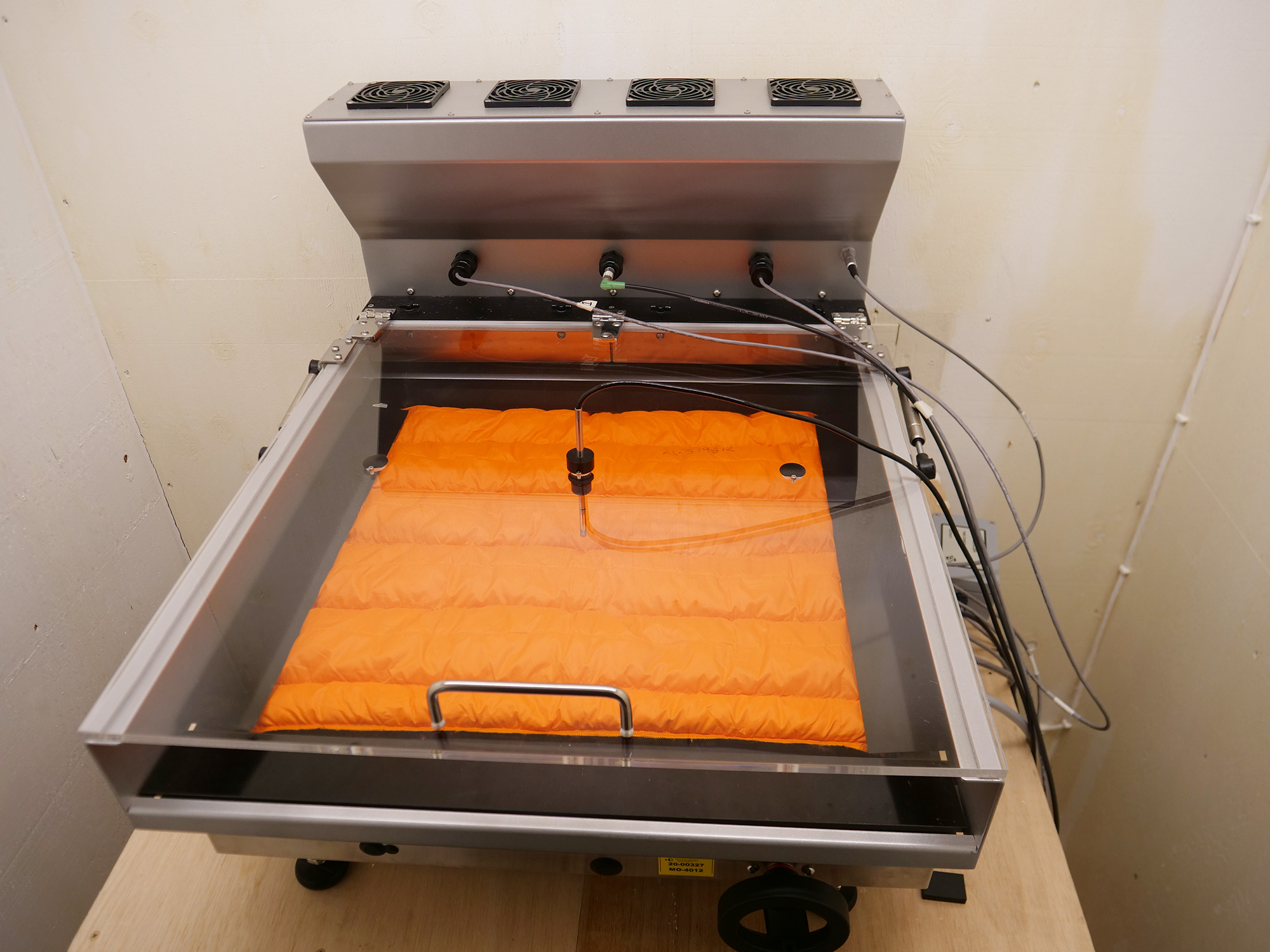Thermal Testing
A lot has changed since the days of wearing layers of furs and animal skins to keep warm. Today, material and textile technology have given humans an abundance of options to design and build well-insulated clothing and products. To determine their true effectiveness, thermal testing must be done to have their insulation factor quantified.
What is Thermal Testing?
Thermal testing is the process through which manufacturers, designers and retailers determine the level of insulation provided by a certain type of material or product. These tests are critical to providing accurate data to manufacturers and consumers. Thermal testing is particularly important for the design and build phase of certain products (such as jackets, sleeping bags, etc.) and the marketing of those same products.
What Are the Factors that Effect Heat Transfer?
Heat transfer is the challenge that insulated products are designed to solve. How do you keep the heat in and stop it from leaving? Heat can dissipate in one of three ways: conduction (the transfer of heat through direct contact of surfaces), convection (transferred through the movement of fluids) and radiation (transferred through electromagnetic waves).
When it comes to materials, there are certain factors that affect its ability to reduce heat transfer.
Weight
While weight is not necessarily an indicator of warmth, it does mean more material. Heavier materials are typically thicker, which reduces the convective currents of heat.
Thickness
Thickness leads to better heat retention. Thicker products (jackets, blankets) tend to have more air, which means the heat must travel further through convective currents to reach the outside environment.
Fill Power
Fill Power contributes to the total the thermal value of a product or item. Higher loft and fill power will contain more air, making them belter insulators.
Form Fitting
Ill-fitting products don’t work well at preventing heat transfer. Products that are too tight will squish their insulation, reducing their ability to retain heat. Conversely, products that are too loose will allow for lots of airflow around the body, leading to major convective heat transfer.
Surface Area
Covering more surface area on a body will increase the total amount of heat retention.
How Does Thermal Testing Work?
Loose Filling
Loose filling can be tested for its insulative capabilities. It is set in a specially designed mesh basket to the desired fill level and then tested. These tests are great to understand the potential of certain materials.
Hot Plate
The next type of test that can be done is with a hot plate. A portion of the fabric is placed on a hot plate (of constant temperature) and set in a chamber of constant temperature. From there, the degree of heat transfer from the plate to the air through the fabric is meticulously examined. This leads to an understanding of exactly how well that particular fabric retains heat. These tests are great for materials and fabric samples that will be used in the construction of garments and products.
Manakin
The manakin is the most accurate for measuring the heat transfer of finished products such as jackets and clothing. The article of clothing is set on the manakin (proper fit is critical for these tests to be accurate) and the degree to which that piece of clothing stops heat transfer is accurately recorded. Finished products benefit the most from these tests as they account for the quality and construction of the finished products, as well as the material itself.
Other Types of Heat Testing
Dry Testing
The most common type of test, these tests measure the heat transfer (conductive, radiative and convective) of materials and products.
Sweat Testing
Sweat testing adds an element of moisture to the test to see how well the materials deal with water vapor. Water vapor absorbs heat. If a material is impermeable, it will retain its insulative qualities.
Dynamic Testing
These tests are done with the manakin moving, to simulate the products in the real world. Dynamic testing determines the full functionality of the product better than static manikin testing.
Why is Thermal Testing Valuable?
Thermal testing provides invaluable information that can be used in every stage of the manufacturing process. It can be used to determine the best material for a product, or the most suitable fabric. They can then be used to accurately measure the performance of those products once they are manufactured.
From the design process to the hand of the end consumer, thermal testing is a tremendously valuable process for everyone involved in the textile and manufacturing process.
IDFL is a leader in the testing and certification of products and materials, including thermal testing. Reach out to IDFL today and see how IDFL can partner with you for your thermal testing needs.

